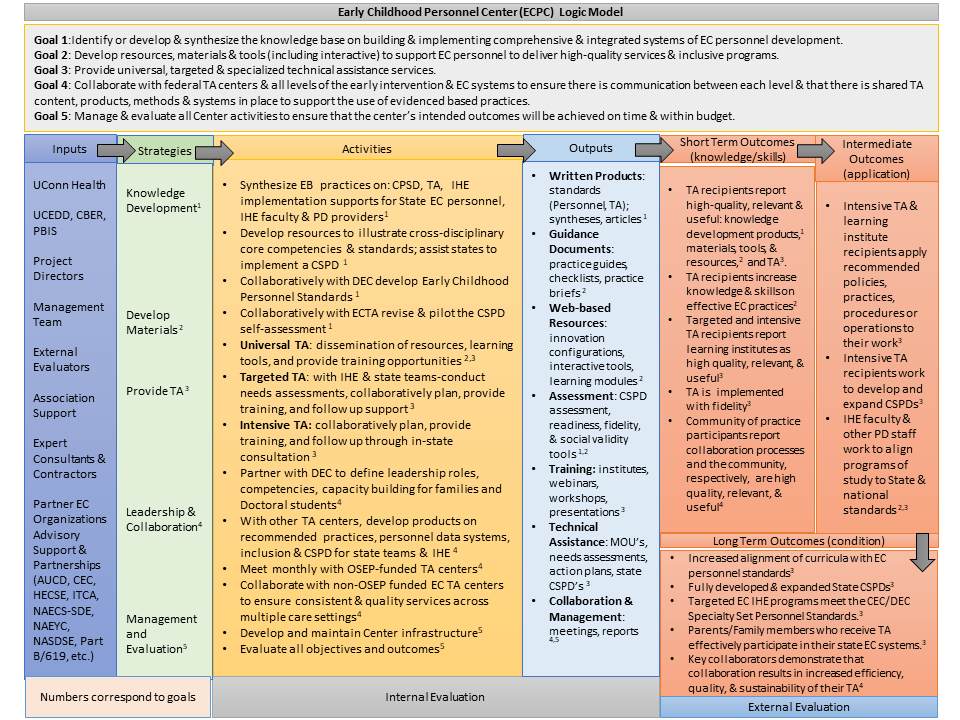
An evaluation plan should address each subcomponent of the CSPD and, initially, address the most critical features of each. Evaluation should be viewed as cyclical in nature. That is, evaluation questions are generated, data are collected, data are analyzed and used to make decisions about the system, changes to the system are made based on the data, system changes are evaluated, and new evaluation questions are generated.
For more information: CSPD Evaluation
-
- Develop a plan for evaluating the system.
- Create processes and mechanisms to collect, store, and analyze data.
- Implement, monitor, and revise the evaluation plan as necessary based on findings from multiple data sources.
- Personnel data collected are linked to child and family outcomes.
Link to State CSPD Page
Early Childhood Personnel Center Logic Model

CSPD State Work – Evaluation
Hawaii has developed a logic model for each of its workgroups - CSPD Logic Model
Hawaii - Evaluation Logic Model
The ECPC collaborated with the Early Childhood Technical Assistance Center (ECTA) to create an Early Childhood Systems Framework for Part C and section B(619) Coordinators to evaluate their current systems, identify potential areas for improvement, and develop more effective and efficient systems that support the implementation of evidence-based practices in each of six main areas. The ECPC’s work resides in the Personnel/Workforce (PN) component of this framework, which addresses the necessity of understanding workforce capacity in order to provide timely and consistent services by prepared personnel in early childhood. ECPC-CSPD Self-Assessment
Quality Indicators
Quality Indicator 11: The evaluation plan for the CSPD includes processes and mechanisms to collect, store, and analyze data across all subcomponents.
-
- Decisions regarding priorities for evaluation questions to be addressed and data to be collected are identified when developing the CSPD plan.
- Multiple processes, mechanisms, and methods to collect data are identified and established based on the need for the information, usefulness of potential findings, and burden on respondents and systems.
- The state has the capacity to support data collection, management, and analysis for personnel qualifications, needs assessment, pre-service and in-service personnel development, and personnel supply and demand.
- Quality review processes for data collection, verification, storage and management, and analysis are defined and implemented regularly.
- Personnel data are linked to child and family outcomes.
Quality Indicator 12: The evaluation plan is implemented, continuously monitored, and revised as necessary based on multiple data sources.
-
- The implementation of the evaluation plan results in data or data summaries and analysis that are useful for decision-making and are accessible across cross-sector early childhood systems.
- Data are used to inform decisions, monitor progress, and make program improvements.
- Data are collected on personnel variables, such as personnel development participation, acquisition of content, and performance of competencies and those data are examined in relation to relevant child and family outcomes.
- Data are collected on personnel development variables, such as units of personnel development, type and amount of support (e.g. observational feedback, coaching, practicums), and content and those data are examined in relation to relevant child and family outcomes.